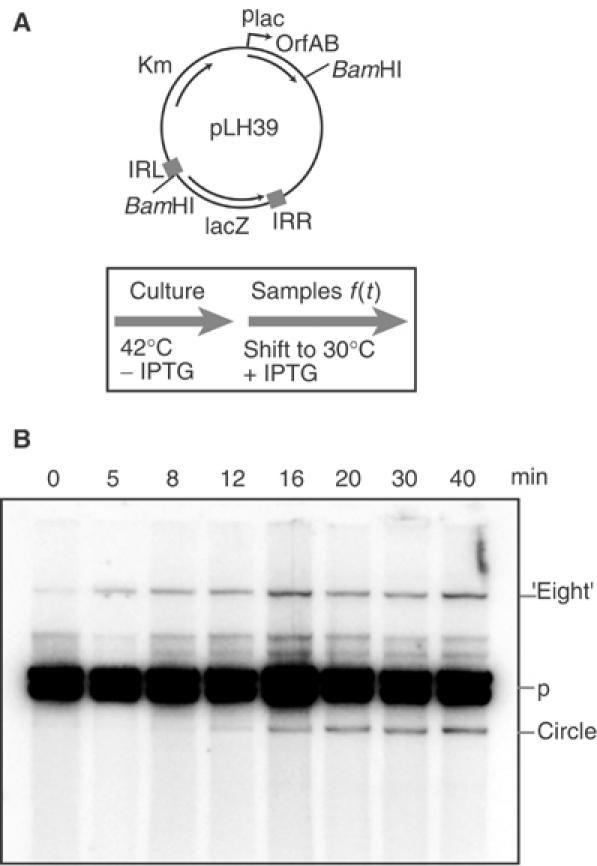Figure 2.

In vivo kinetics of figure-eight and circle formation. (A) Plasmid structure and experimental regime. Plasmid pLH39 is a p15A-based plasmid carrying an artificial IS911-derived transposon and an independent OrfAB gene under control of placuv5. The position of BamHI sites to separate different molecules is shown. The culture was grown at 42°C (OrfAB activity is temperature sensitive) to ensure that there was no residual Tpase activity. At t=0 (OD600=0.6), the population was transferred into LB medium prewarmed at 30°C and production of Tpase was induced with IPTG. Samples were withdrawn at different times, growth was stopped by addition of an sodium azide/ice mixture, and cleared lysates were then made. (B) Separation of plasmid species. Agarose gel of BamHI-digested DNA samples removed at times 0–40 min (shown above the lanes). The separated species were visualised by hybridisation directly in the dried gel with a transposon-specific oligonucleotide probe. The position of the χ forms generated by BamHI digestion of the figure-eight molecules is shown (‘eight'), together with the two bands obtained from the donor plasmid (p) and the BamHI-linearised transposon circles. Note that some additional minor bands are due to incomplete digestion of plasmid molecules.
